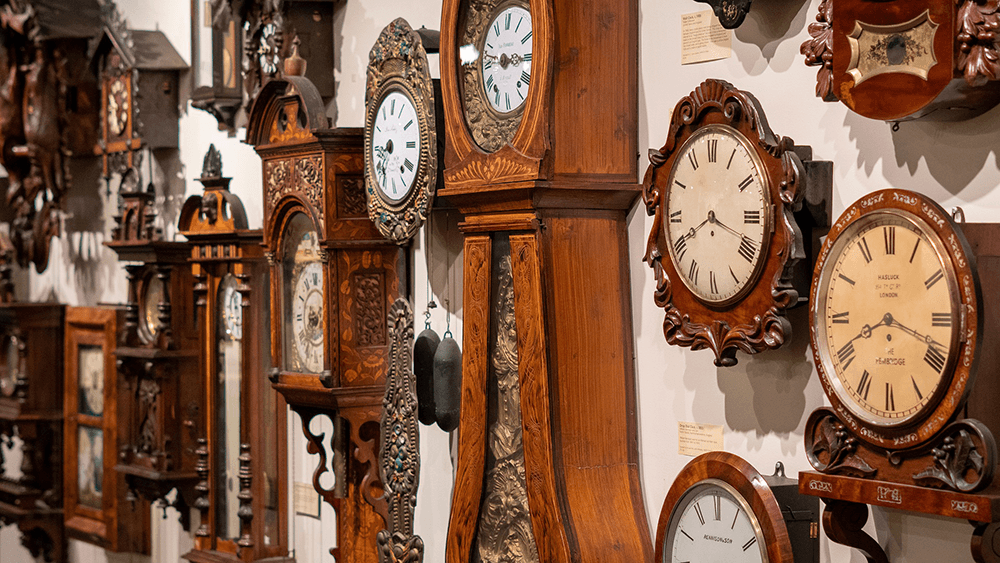
 Storage Tips
Storage TipsHow to Store and Move a Grandfather Clock
Grandfather clocks are priceless family heirlooms that give a stately appearance to any room. They have many delicate components that require periodic maintenance and cleaning to stay functional and attractive. These beautiful pieces also must be handled with care when moving them from one place to another.
Storing a grandfather clock is a much more complicated process than tucking away a common wall clock into a box. There are delicate glass panels, weighted pendulums, and other parts that need to be packed properly to prevent any damage to your clock. This guide will show you how to store and move a grandfather clock so that it reaches your next destination safely.
How to Store a Grandfather Clock, Step By Step
To store a grandfather clock properly, you need to partially dismantle it and meticulously protect its components with protective packing material. It's important to move this piece carefully as it is quite fragile. Here is the step-by-step process for storing this delicate clock.
- Let the clock wind down for three days, then remove the weighted pendulums from the clock carefully. Label their original positions (i.e. left, middle, or right position) for future reassembly.
- Wrap the clock's pendulums in a moving blanket or bubble wrap to protect them from impacts.
- Remove the clock's side glass panels and wrap them with bubble wrap or moving blankets.
- Put any chains or cables in a plastic bag and label them accordingly.
- If your grandfather clock has chime rods, put them through the holes in the cardboard and slide the cardboard to keep them separated. Secure this cardboard with masking tape to the back of the case. This makes sure the chime rods don't hit against each other during the move and break.
- Place soft moving blankets or bubble wrap inside the clock to stabilize all the remaining glass components inside.
- Wrap the clock's exterior in bubble wrap and a protective blanket, which is kept in place by tape.
During this entire storing and protection process, wear cotton gloves to protect the delicate components of your clock's interior. This will keep fingerprints and dirt away from the chimes, pendulums, and glass parts.
Can You Lay Down a Grandfather Clock During a Move?
Whether you can lay down a grandfather clock to move depends on your clock's condition. It's possible to move it his way, but it's generally not advised because laying the clock down horizontally adds pressure to the panels and glass elements. While newer grandfather clocks have a smaller chance of being damaged being transported horizontally, antique clocks are more susceptible to damage. Therefore, the best way to move these delicate pieces is to keep them upright at all times.
Should You Store Your Clock or Have the Movers Do It?
It's better to disassemble your grandfather clock yourself. First of all, movers are on a time crunch to take all your household items into a truck. Do your part to protect the most fragile items in your home by pre-packing these and labeling your clock as "fragile". Before your professional movers arrive, take the clock apart yourself and have it ready to be put into the truck. Make sure that the clock is wrapped int a furniture blanket and secured with packing tape so that it won't be damaged when placed next to your other furniture and boxes.
How to Move Your Grandfather Clock Safely
Grandfather clocks can easily weigh between 200 and 300 pounds. In fact, it's not uncommon to see a grandfather clock that weighs several hundred pounds. This means that moving it solo can cause you injury and damage your clock. To properly move it, get at least another person to help, and use a dolly to transport it safely. For your safety, at least two people should move the clock, depending on its weight. There should be at least one person picking up the top of the clock and one holding the bottom to get it on the dolly safely. This same team should also be strong enough to slide the clock off the dolly and into the moving truck.
Long-Term Storage? Consider Climate Control
If your grandfather clock is moving from one place to another in a short time, then you don't have to be too worried about temperature fluctuations and warping. However, if your grandfather clock is to be stored for a long time, consider getting climate-controlled storage to protect its fragile wood. Many grandfather clocks are antiques and need to be kept under strict conditions that avoid too much humidity and extreme temperatures. This extra precaution can save your beautiful family heirloom while you're in a transitional season.
Common Mistakes While Packing & Moving Your Grandfather Clock
Because grandfather clocks are specialty items that are only becoming rarer as time passes, people often make mistakes while packing and moving them. Here are some of the common packing errors that occur:
- Laying a delicate antique grandfather clock horizontally.
- Not protecting the pendulums and chimes.
- Not wrapping the glass panels with protective materials.
- Leaving the clock's disassembly and protective packing to the movers
- Reassembling the clock by placing the weights incorrectly. Many clock owners mix up the clock's three weights. A typical grandfather clock has three weights in which the one on the right is the heaviest. Improper weight placement will result in the clock not working as it should.
- Not letting the clock wind down before removing the weights. Instead, let the clock run two or three days before taking the weights off.
We're Your Storage Solution!
Storage Rentals of America is your convenient self-storage solution. So come into our office or give our storage experts a call at 1-800-457-5678. Our call center is available 7 days a week and can help determine which storage unit size best fits your storage needs.



